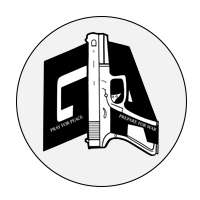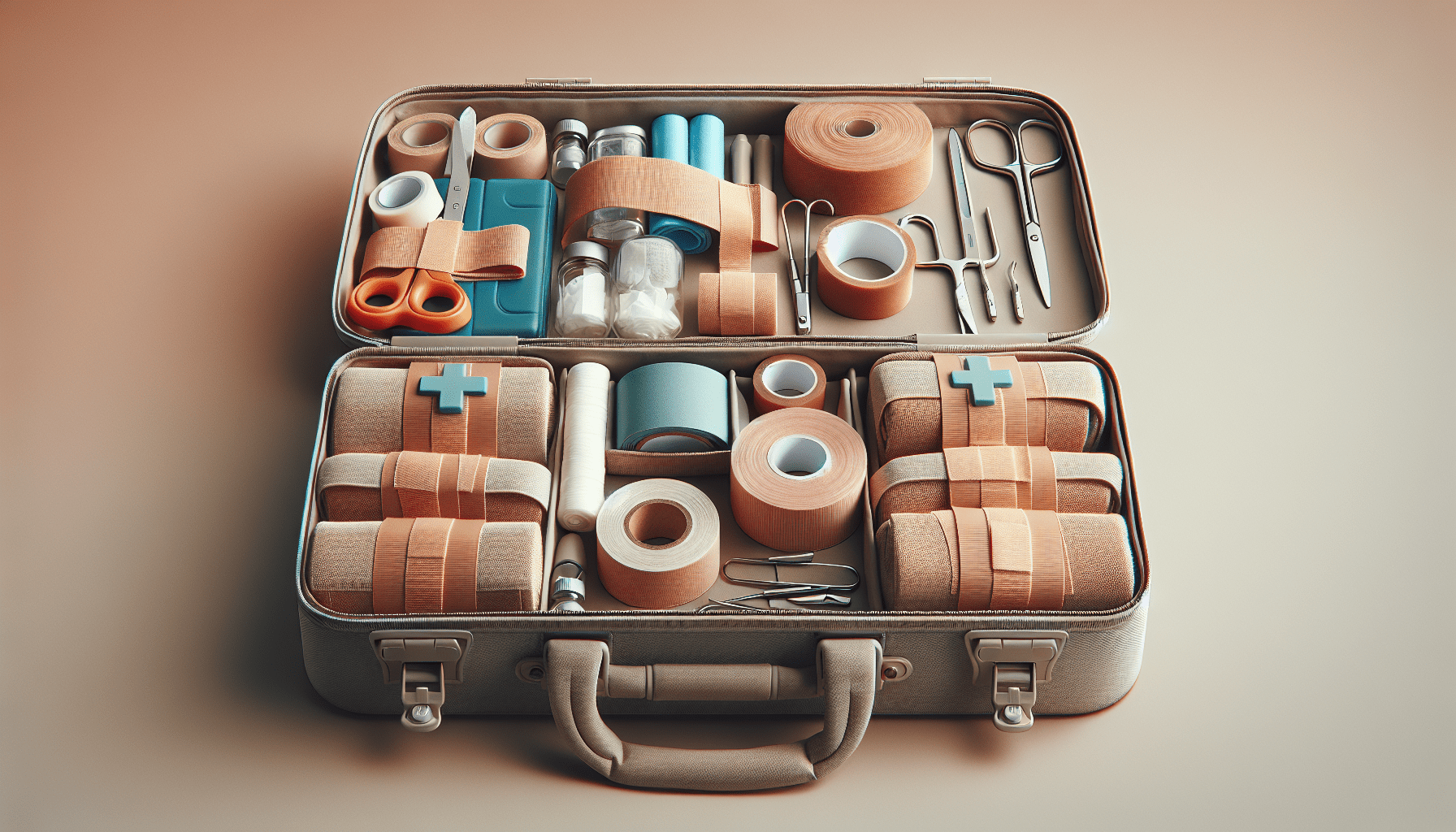Have you ever found yourself in a situation where someone got injured and you weren’t quite sure what to do? Maybe you were hiking with friends, playing basketball, or even just walking the dog when suddenly, someone twisted an ankle or took a nasty fall. It’s these times that having a bit more knowledge about first aid for fractures and sprains can turn you into the hero of the day.
Understanding Fractures and Sprains
Before we jump into what you should do, let’s get clear on what we’re dealing with. Fractures and sprains might sound like medical jargon, but they’re common injuries that you might encounter more often than you’d think.
What is a Fracture?
A fracture is just a fancy term for a broken bone. It’s a break in the continuity of the bone, which can happen in various ways: a complete break, a crack, or even a shatter. Fractures usually occur due to trauma like falls, accidents, or direct blows. There are different types of fractures—simple (closed), compound (open), comminuted, and greenstick, among others—and understanding the type can help shape your response.
What is a Sprain?
A sprain, on the other hand, involves ligaments, which are the tissue that connects bones to other bones. When these ligaments are stretched or torn, you get a sprain. The most commonly sprained areas include ankles, wrists, and knees. sprains might not sound as serious as fractures, but they can be quite painful and limit movement significantly.
First Aid Essentials: What You Need
Knowing what essential items you’ll need for first aid is half the battle won. While you’re at it, stock up your first aid kit with the following indispensable supplies:
| Item | Purpose |
|---|---|
| Bandages | To wrap around sprains or support fractured areas |
| Splints | To keep the fractured bone from moving |
| Ice Packs | To reduce swelling and numb the affected area |
| Pain Relievers | Over-the-counter medications to manage pain |
| Medical Tape | To secure bandages or splints |
| Scissors | For cutting bandages and tape |
| Sterile Gauze Pads | To cover open wounds or cuts near the fracture or sprain |
| Elastic Bandage | To provide compression for sprains |
| Sling | To keep the arm immobilized in case of arm or shoulder fractures |
| Tweezers | For removing debris from wounds |
These items will cover most basic first aid needs for fractures and sprains, making you well-equipped to handle the situation.
Steps to Handle a Fracture
Now, let’s walk through the steps you should take if someone has a fracture. Think of this as your blueprint:
Assess the Situation
First, make sure the scene is safe. If someone fell during a hike, ensure that there’s no loose rock above or dangerous animals nearby. Once you’ve ruled out immediate danger, get to the person and assess their condition.
Keep the Person Still
Movement can make a fracture worse, so keeping the injured person as still as possible is crucial. Immobilize the affected area to prevent further damage.
Check for Life-Threatening Conditions
Before focusing on the fracture, ensure there are no life-threatening conditions like heavy bleeding or troubles with breathing. If there are, handle those first.
Apply a Splint
If you have a splint handy, use it. A splint is any rigid material that you can use to support the broken bone. Place the splint along the injured limb, ensuring it extends beyond the joints above and below the fracture. Secure it with medical tape or bandages, but avoid tying it too tight. If you don’t have a splint, improvising is okay—sticks, rolled-up newspapers, or even a ruler can work.
Apply a Sling (For Arm or Shoulder Fractures)
If it’s the arm or shoulder, a sling can help keep it immobilized. You can make a DIY sling with a triangular bandage or even a shirt. Place the injured arm over the chest, and tie the bandage around the neck.
Minimize Swelling
Apply an ice pack wrapped in cloth or a towel to the injured area for about 20 minutes at a time. This can help to reduce swelling and numb some of the pain.
Offer Pain Relief
If the person is in a lot of pain and it’s safe to do so, offer over-the-counter pain relievers like ibuprofen or acetaminophen.
Seek Professional Medical Help
Even if you feel like you’ve got a handle on the situation, getting the person to a hospital for professional evaluation and treatment is crucial. Fractures can sometimes require surgery or specialized treatment that you can’t provide on the spot.

Steps to Handle a Sprain
Sprains might not seem as dramatic as fractures, but they can be quite debilitating. Here’s your go-to guide for handling sprains:
Assess the Situation
Again, keeping safety in mind, ensure there are no immediate dangers. If the person fell, check if there might be causes for concern like wet surfaces or unstable grounds.
Follow the R.I.C.E Method
The R.I.C.E method is a tried and tested approach for handling sprains:
Rest
Encourage the injured person to stop whatever activity led to the injury. The affected area needs time to rest to prevent further damage.
Ice
Apply an ice pack wrapped in cloth or a towel to the injured area for 20 minutes at a time. Repeat this several times a day to reduce swelling and numb pain.
Compression
Use an elastic bandage to wrap the sprained area. This helps control swelling and adds support to the injured ligament. Make sure it’s not too tight, as you don’t want to cut off blood circulation.
Elevation
Raise the injured part above heart level when possible. This reduces swelling by allowing fluids to drain away from the injured area.
Immobilize the Area
If the sprain is severe, immobilizing the area using a splint or brace might be necessary. This prevents further strain on the ligament.
Offer Pain Relief
Pain can be managed with over-the-counter medications like ibuprofen or acetaminophen, but make sure to follow the dosage instructions.
Monitor for Severe Symptoms
Sprains usually improve with time and care. However, if you notice severe swelling, a lot of bruising, or the injured person can’t put any weight on the affected area, it’s time to seek professional medical help.
How to Tell the Difference Between a Fracture and a Sprain
Sometimes, it can be challenging to tell if you’re dealing with a fracture or a sprain, especially if you don’t have an X-ray machine in your back pocket. Here are a few signs that can help you differentiate between the two:
| Symptom | Likely a Fracture | Likely a Sprain |
|---|---|---|
| Intensity of Pain | Severe and often immediate | Moderate to severe, but typically gradual |
| Swelling | Significant and often localized | Moderate and spreads gradually |
| Bruising | Often immediate and severe | Develops gradually and less severe |
| Ability to Move | Severely limited; impossible in some cases | Limited but still somewhat possible |
| Deformity | Common; the bone may look out of place | Rare |
Though these guidelines can help, remember that only a medical professional can give a definitive diagnosis.
Dealing with Emotional Stress During an Injury
Injuries can be traumatic, not just physically but emotionally. Supporting the injured person emotionally is just as important. Here’s how you can help:
Stay Calm
Your calm demeanor can be incredibly reassuring. If you panic, the injured person is more likely to panic as well.
Provide Comfort
Simple actions like holding their hand, talking calmly, and reassuring them that help is on the way can make a world of difference.
Avoid Blame
Accidents happen, and placing blame, even if unintentionally, doesn’t help anyone. Focus on helping, not on how the injury happened.
Explain What You’re Doing
Keeping the injured person informed about what you’re doing can reduce anxiety. Tell them you’re applying a splint, wrapping a bandage, or fetching an ice pack.
When to Call for Emergency Help
Sometimes the best course of action is to call for emergency help right away. Here’s when you should absolutely make that call:
- If the person is in severe pain and you cannot control it
- If there is a visible deformity or the bone is protruding through the skin
- If you notice excessive swelling or heavy bleeding
- If the injured person cannot move the affected area at all
- If there are signs of a head injury or concussion (such as dizziness, vomiting, or confusion)
- If the person is unresponsive or shows signs of shock (pale, clammy skin, rapid heartbeat)
Prevention is Better Than Cure
While knowing how to provide first aid is crucial, preventing injuries in the first place is equally important. Here are some tips to avoid fractures and sprains:
Exercise Regularly
Strong muscles and good flexibility can help stabilize your joints and prevent sprains.
Use Protective Gear
Whether you’re cycling, skateboarding, or playing sports, wearing the appropriate protective gear can go a long way in preventing injuries.
Be Mindful of Your Surroundings
Whether you’re hiking, walking, or engaging in sports activities, being aware of your surroundings can help you avoid accidents.
Know Your Limits
Pushing your body too hard can lead to injuries. Understand your physical limits and respect them.
Proper Footwear
Wearing the right shoes for the right activities provides better support and prevents unnecessary stress on your ligaments and bones.
The Role of Training and Education
Speaking of prevention, knowing what to do in emergencies and how to avoid them starts with good training and education. This is where establishments like Green Line Arms come into play. Not just a gun shop, Green Line Arms is a hub for advanced training programs and cutting-edge simulation experiences. Whether you’re looking to sharpen your shooting skills or learn more about first aid and emergency response, they have resources and courses that cater to enthusiasts of all levels.
By investing time in proper training, not only can you become proficient in a skill like shooting, but you can also gain valuable knowledge that extends into other aspects of safety and emergency preparedness.
Conclusion
Understanding first aid for fractures and sprains means you’re better equipped to handle unexpected situations with confidence. Whether you’re dealing with a minor sprain from a friendly basketball game or a more severe fracture from a hiking trip, these guidelines can help you manage the situation effectively until professional help arrives.
Remember, while you can do a lot to assist an injured person, seeking professional medical care is always the best course of action for comprehensive treatment. And if you’re keen to take your preparedness to the next level, consider visiting Green Line Arms for additional skills and tips on first aid and emergency response.
There’s no telling when you might find yourself in a situation where first aid knowledge is essential, but knowing you’re equipped to handle it can give you peace of mind. Now, go forth and be that helping hand when someone needs it most!




